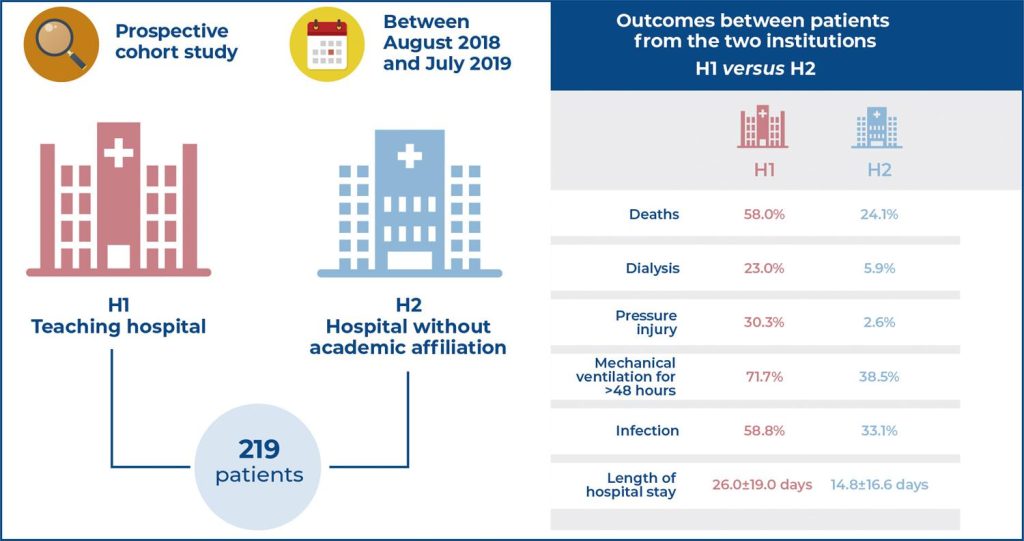einstein (São Paulo). 15/Sep/2023;21:eAO0406.
Are patient volume and care level in teaching hospitals variables affecting clinical outcomes in adult intensive care units?
DOI: 10.31744/einstein_journal/2023AO0406
Highlights
- Worse outcomes were more prevalent in the teaching hospital.
- Understanding the importance of teaching hospitals to implement well-established care protocols is critical.
INTRODUCTION
Some studies have reported the association between receiving hospital characteristics and the number of patients assisted with clinical outcomes.(,) Some authors have also demonstrated this relationship in scenarios such as coronary care units and care units for patients with diabetes.(,) Reportedly, hospitals with high admission volumes have better outcomes for surgical procedures; however, studies on the impact of volume on patient outcomes in the intensive care units (ICU) are limited.(,)
Some studies have attempted to associate better patient outcomes with different hospital settings, such as teaching and nonteaching hospitals. In a teaching environment, procedures are performed by students who may lack adequate expertise; therefore, potential unnecessary risks to patients exist. On the contrary, some studies have indicated superior results in teaching environments.(-)
[…]
158

